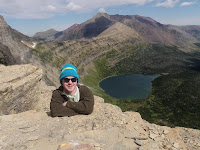This week, the stove group spent 4 days
in the AISE workshop with Bernard further refining the stove design.
It was exciting finally getting to see and test the hard work of the
spring travelers after only reading about it and seeing pictures of
it last term. After an initial test, we started to make
modifications to alleviate concerns brought up while our group was in
Hanover or by the Spring travelers.
(Note: The tests we have been
performing have been using sawdust. As of this moment, we have not
yet been able to acquire coffee husk in addition to the fact that
sawdust is readily and cheaply available. Future design plans hope to
be able to burn fuels regardless of their density e.g. both coffee
husk and sawdust)
In development of the stove during this
trip, we are focusing more on how to make this stove viable in the
marketplace. Concerns that were apparent to us was the overall cost
of the stove (at ~45,000 TSH while our target is 20,000-30,000 TSH),
the need to replace the inner wire mesh insert (due to the lack of
durability of wire mesh), and the length of burn (which at ~1 hour is
not sufficient to prepare traditional food). We have been inspired by
the Kisangani Sawdust Stove produced by the Kisangani Smith Group
(KSG). This stove has been very successful as a cost effective stove,
lacking our wire mesh design, and producing an incredible burn
duration of 6 hours. Initial distribution has also been incredibly
successful. We have reached out to KSG and they have an extended an
invitation to meet in person and speak about their project. If time
permits on this trip, we would be very interested in traveling to
Kisangani and meeting KSG.
From the initial burn, we noted that
the stove burned hot and steady for about an hour but was not a
particularly clean burn. When analyzing the new design of the Spring
travelers, we guessed that the additional outer holes in the bottom
of the stove that vent air into the fuel bed were inhibiting proper
pyrolysis and causing some of the improper combustion. Using one of
plates from an old stove, we covered (and have continued to cover)
these outer holes. Burns showed that this did not make a marked
difference in the burn temperature or time but slightly improved the
cleanness of the burn.
Keeping the Kisangani design in mind
the next day, we tried to pack our fuel much like how it is packed in
the Kisangani stove. We removed the wire mesh insert and placed a
small wood log in the middle of the stove before loading the fuel. As
we loaded the fuel into the fuel canister, we compressed the fuel.
After completely filling the canister, the log was carefully twisted
and pulled out leaving an intact chimney. Initial tests were
tremendously exciting. We achieved burns of over 1.5 hours (time was
limited due to the working hours of the workshop on the day of that
test, but much fuel was left unburned) that were very hot with almost
no smoke produced. The burn continued steadily without tending which
was a major concern in previous models. We were tremendously excited
about the possibility of removing the wire mesh from our design as
well as the longer burn time initially exhibited before the test was
stopped.
However, the initial success proved not
to be repeatable. For the same afternoon, we only made one
modification, hammering out the flanges on the plate we attached to
the bottom of the stove to allow more primary air to reach the stove.
The subsequent test that afternoon started with the same intensity,
but stopped only 10 minutes into the test. Due to the high wind that
afternoon and the fact that the flanges probably played some role in
mitigating the effect of wind in the previous test, we concluded that
the wind of the day limited the success of that test.
Unfortunately since then, the 3 tests
we have run have not produced the same strong burn of the first day.
Modifications we have made have been to cut the center of the bottom
of the stove out to allow increased primary air and to hammer the
flanges on the plate back down to imitate that initial successful
test. From these tests, we have noted 2 major issues currently.
First, with the pot on the stove, it seems as there is insufficient
updraft to provide the necessary oxygen for combustion. Each time we
place the pot on the stove, the burn will stop within 3 minutes.
Without the pot on, the stove will continue burning for longer.
Second, it seems as though the white ash building on the center of
the chimney insulates the unburned fuel from air and heat.
During this last week, we were
tantalized by the single very successful test that produced most of
the characteristics we want our final product to have. In the coming
week, we will continue trying to reproduce that successful test.
Furthermore, we are planning on attempting to recreate the Kisangani
stove to better understand their successes and how to improve upon
them. We are hoping this next week will prove fruitful towards
development of our final product.







.jpg)